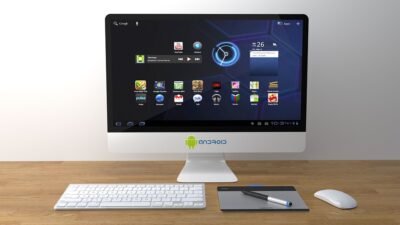In today’s digital landscape, choosing the right device is more crucial than ever. With tablets and laptops increasingly dominating the tech market, figuring out which one best suits your needs can be a daunting task. Both devices come with their own sets of benefits and drawbacks, making it essential to evaluate your usage requirements before making a decision. This article explores the key differences between tablets and laptops to help guide your choice.
Understanding the Basics
Tablets
Tablets are portable, touch-screen devices that typically operate on mobile operating systems like iOS or Android. They often come with a sleek design, lightweight build, and longer battery life. Tablets are ideal for consumption-based activities such as browsing the web, streaming videos, reading, and light tasks like note-taking.
Pros:
- Portability: Lightweight and easy to carry around.
- Long Battery Life: Generally offers extended usage on a single charge.
- User-Friendly Interface: Touchscreen technology allows for intuitive navigation.
- App Availability: Access to a wide range of mobile applications for productivity and entertainment.
Cons:
- Limited Functionality: Less powerful than laptops; may struggle with heavy tasks like video editing or gaming.
- Typing Experience: While external keyboards are available, many tablets lack comfortable built-in keyboards.
- Storage Constraints: Often come with limited storage options compared to laptops.
Laptops
Laptops are versatile computing devices that usually run on full-fledged operating systems like Windows or macOS. They are designed to handle heavier workloads, making them suitable for business tasks, software development, graphic design, and gaming.
Pros:
- Powerful Performance: Equipped with robust processors and larger memory, making them suitable for demanding applications.
- Full Keyboard Experience: Built-in keyboards offer a more comfortable typing experience, ideal for long writing tasks.
- Versatility: Capable of multitasking, running multiple applications, and interacting with peripherals like printers and external monitors.
- More Storage Options: Typically provide larger storage capacities, including SSDs and HDDs.
Cons:
- Less Portability: Generally heavier and bulkier than tablets, making them less convenient for on-the-go use.
- Shorter Battery Life: Intensive tasks can drain battery much faster.
- Setup Time: Generally take longer to power on and resume than tablets.
Usage Scenarios
Choosing between a tablet and a laptop boils down to evaluating your specific needs.
For Casual Users
If you primarily use your device for casual activities such as browsing the web, watching videos, or occasional social networking, a tablet may be the perfect fit. Tablets are compact, affordable, and offer excellent battery life, making them convenient for everyday use.
For Students
Students will benefit from both devices. A tablet can be useful for taking notes or reading digital textbooks, while a laptop provides a more stable environment for writing essays, conducting research, and running software specific to their courses. Therefore, students should consider their coursework demands when selecting a device.
For Professionals
Professionals engaged in tasks that require software like spreadsheets, graphic design applications, or coding tools will find laptops to be better equipped for their needs. Laptops offer the processing power and functionality necessary for work-related tasks, especially in fields such as engineering, business, or technology.
For Creatives
For artists, designers, and video editors, laptops typically provide a broader array of software options and better hardware specifications to handle demanding tasks. However, some tablets, especially those designed for creative work, come with stylus support and tailored apps that can suffice for graphic design on the go.
Conclusion
Ultimately, whether a tablet or a laptop is right for you depends on how you intend to use the device. Tablets excel in portability and ease of use for casual tasks, while laptops deliver the power and functionality required for more intensive activities.
Consider your lifestyle, professional needs, and personal preferences. It may also be worth considering hybrid devices that combine the best aspects of both worlds. Always remember to assess your options carefully, as making an informed decision can significantly enhance your productivity and overall satisfaction with your device.



